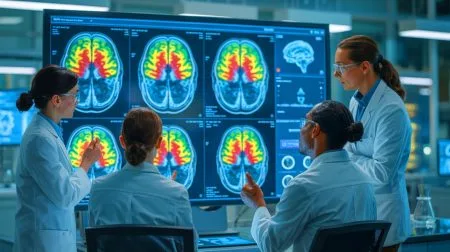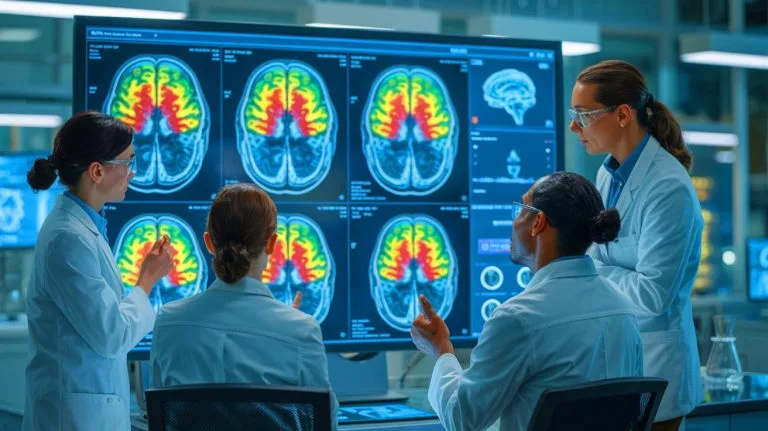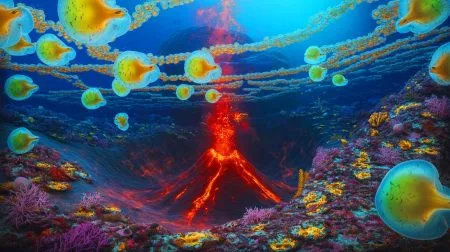| IN A NUTSHELL |
|
The landscape of ADHD research has experienced a potential breakthrough with a new study employing an innovative scanning technique called the traveling-subject method. This development could provide a more reliable understanding of the structural differences in ADHD brains. Conducted by a team of Japanese scientists from Chiba University, the study aims to correct the inconsistencies in previous ADHD brain scan research. By addressing the technical noise that plagued prior studies, this research offers a clearer picture of how ADHD is associated with structural brain differences, thus opening new avenues for diagnosis and treatment.
Understanding ADHD and Its Complexities
Attention-deficit/hyperactivity disorder (ADHD) is a neurodevelopmental condition characterized by symptoms such as inattentiveness, hyperactivity, and impulsivity. Despite being widely recognized, the underlying causes and structural brain differences associated with ADHD have remained somewhat elusive. Previous studies often produced conflicting results, with some indicating smaller gray matter volumes in children with ADHD, while others found no significant differences. This inconsistency has made it difficult to establish a definitive link between ADHD and specific brain structures.
The new study by Chiba University addresses this issue by introducing the traveling-subject (TS) method. This technique aims to eliminate the technical noise that can distort data in multi-site MRI studies. By standardizing scans across different machines, researchers can focus on genuine biological variations rather than discrepancies introduced by varying equipment. This method holds promise for refining our understanding of ADHD and its impact on brain structures, offering a more accurate basis for research and diagnosis.
The Traveling-Subject Method: A New Approach
The TS method involves using a consistent group of subjects across different MRI machines to identify and correct scanner bias. In this study, 14 non-ADHD volunteers were scanned on four different machines over three months. Since the volunteers’ brain structures would not change significantly in this period, any differences in the scans were attributed to the equipment rather than biological variations. This approach provided a neurotypical control template to compare against a larger dataset from the Child Developmental MRI database.
By applying the TS method, researchers were able to identify more reliable structural differences in ADHD brains. The study found that children with ADHD exhibited smaller brain volumes in the frontotemporal regions compared to their non-ADHD peers. These areas are crucial for attention, emotional regulation, and executive function—key aspects affected by ADHD. The study’s findings highlight the importance of using robust methodologies to enhance the accuracy and reproducibility of neuroimaging research, potentially paving the way for earlier and more precise diagnoses.
Implications for ADHD Diagnosis and Treatment
The advancements in scanning techniques could significantly impact the diagnosis and treatment of ADHD. With a clearer understanding of the structural brain differences associated with ADHD, clinicians may be able to diagnose the condition earlier and develop more personalized treatment plans. The ability to track how therapies affect brain structure could lead to more effective interventions tailored to individual needs.
Moreover, providing measurable biological evidence of ADHD could help reduce the stigma surrounding the disorder. Historically, ADHD has often been misunderstood or dismissed as a behavioral issue rather than a neurobiological condition. The findings from this study offer concrete evidence of structural differences, thereby helping to validate the experiences of those with ADHD and their families. This shift in understanding could also influence public perception and policy, promoting a more supportive environment for individuals with ADHD.
Challenges and Future Directions
While the study presents promising results, there are limitations to consider. The sample used may not fully represent the broader population of children with ADHD, as participants were drawn from specific geographical and clinical settings. This limitation suggests the need for further research to validate these findings on a larger scale and across diverse populations.
Future research could expand on these findings by exploring how different therapies impact brain structures over time. Additionally, investigating the potential for the TS method to be applied to other neurodevelopmental disorders could open up new avenues for understanding and diagnosing a range of conditions. As the scientific community continues to refine its methods and approaches, the potential for breakthroughs in ADHD research and treatment remains significant.
The introduction of the traveling-subject method marks a significant step forward in ADHD research. By offering a more reliable understanding of the structural differences in ADHD brains, this study opens the door to improved diagnostic and treatment strategies. As we consider the implications of these findings, the key question remains: How can these advancements be integrated into clinical practice to benefit individuals with ADHD and enhance their quality of life?
Did you like it? 4.5/5 (26)








Wow, this is a game-changer for ADHD research! 🧠
Fascinating study! But why only 14 volunteers? Is that enough to draw conclusions? 🤔
Great to see advancements in ADHD research. Thank you for sharing! 😊
How long did it take to scan all 14 volunteers on four machines?
How does this method compare to other techniques in terms of cost and efficiency?
Do you think this method will be adopted by other countries soon?
Wait, so the volunteers were not ADHD patients? Isn’t that a bit strange?